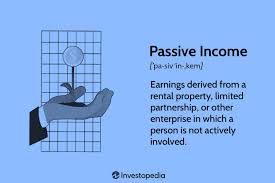Investing in the stock market for passive income has been a popular strategy among individuals seeking financial independence. By following a systematic approach, consistent returns can be generated over time without active management. This guide outlines the essential steps to achieve passive income through stock market investments.
Step 1: Understanding the Basics
Before diving into stock market investing, a solid understanding of basic investment concepts is essential. Stocks, also known as shares or equities, represent ownership in a company. When a company performs well, its stock price tends to rise, leading to potential capital gains. Additionally, many companies distribute a portion of their profits to shareholders in the form of dividends, providing a regular income stream.
Step 2: Setting Financial Goals
Clear financial goals should be established before investing. These goals might include saving for retirement, generating supplementary income, or building wealth. A clear understanding of these objectives will guide the investment strategy and determine the appropriate level of risk tolerance.
Step 3: Building a Diversified Portfolio
A diversified portfolio is crucial for reducing risk. Investments should be spread across different sectors and industries to mitigate the impact of poor performance in any single area. Exchange-traded funds (ETFs) and mutual funds are effective tools for diversification, offering exposure to a broad range of stocks with a single investment.
Step 4: Selecting Dividend-Paying Stocks
For passive income, dividend-paying stocks are often preferred. Companies with a history of consistent and increasing dividends are ideal candidates. These companies are typically well-established, financially stable, and capable of generating steady profits. Research should be conducted to identify such companies, focusing on their dividend yield, payout ratio, and dividend growth rate.
Step 5: Automating Investments
Automation simplifies the investment process and ensures consistent contributions. Many brokerage firms offer automatic investment plans, allowing a fixed amount of money to be invested at regular intervals. This approach, known as dollar-cost averaging, reduces the impact of market volatility by spreading out the investment over time.
Step 6: Reinvesting Dividends
Reinvesting dividends is a powerful strategy for compounding returns. Instead of taking dividends as cash, they can be reinvested to purchase additional shares. Over time, this can significantly increase the overall value of the investment and the amount of passive income generated.
Step 7: Monitoring and Rebalancing the Portfolio
While the goal is to generate passive income, periodic monitoring and rebalancing of the portfolio are necessary. Changes in the market, economic conditions, and company performance can affect the portfolio’s composition. Rebalancing involves adjusting the allocation of assets to maintain the desired level of diversification and risk.
Step 8: Minimizing Fees and Taxes
Investment returns can be eroded by fees and taxes. Low-cost index funds and ETFs should be chosen to minimize fees. Tax-advantaged accounts, such as Individual Retirement Accounts (IRAs) or 401(k) plans, can be utilized to reduce tax liabilities. Awareness of the tax implications of dividends and capital gains is essential to optimize the net returns.
Step 9: Staying Informed and Educated
The stock market is dynamic, with constant changes and developments. Staying informed about market trends, economic indicators, and company news is important. Continuous education through books, courses, and financial news sources can enhance investment knowledge and decision-making skills.
Step 10: Patience and Discipline
Patience and discipline are key attributes for successful stock market investing. Short-term market fluctuations should not provoke hasty decisions. A long-term perspective, adherence to the investment strategy, and avoidance of emotional reactions to market movements are essential for achieving passive income goals.
Conclusion
Investing in the stock market for passive income requires a strategic approach, careful planning, and consistent execution. By understanding the basics, setting clear goals, diversifying the portfolio, selecting dividend-paying stocks, automating investments, reinvesting dividends, monitoring and rebalancing the portfolio, minimizing fees and taxes, staying informed, and exercising patience and discipline, a steady stream of passive income can be achieved. This guide serves as a roadmap for individuals seeking financial independence through stock market investments, emphasizing the importance of a systematic and informed approach.










